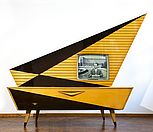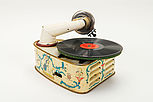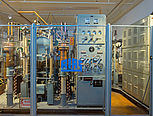Telegraph, Radio, Television – The History of Electrical Innovation
“Telegraph Construction Company” – that sounds like some dusty old public utility, not the hippest startup of its day. But in 1847, that’s exactly what the Siemens & Halske Telegraph Construction Company was. It produced equipment for the new world of telecommunications and was a driver of technical innovation. Berlin quickly became the hub for this pioneering industrial sector, the electrical industry, in which Siemens, AEG, and Telefunken made a name for themselves. Berlin remained their center of operations until the Second World War.
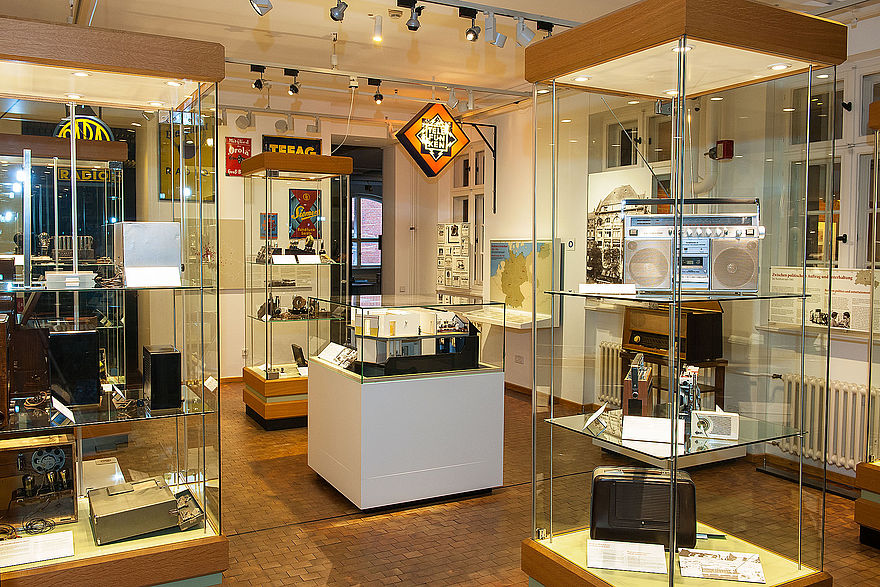
SDTB / C. Kirchner
The exhibition “Elektropolis Berlin: A History of Telecommunications” explores the development of telecommunications and its influence on the electrical industry in Berlin. In the early 19th century, mounted messengers and stagecoaches were still the standard means for rapidly transmitting information. In 1833 the first optical telegraph line in Germany, from Berlin to Cologne to Koblenz, ushered in the age of telecommunications. The exhibition traces Berlin’s swift rise to becoming the German leader in six sectors: telegraphy, telephony, radio communication, radio broadcasting, audio engineering, and television. By 1950, 50 percent of the German radio broadcasting industry and 70 percent of the German electrical industry were headquartered in Berlin.
Berlin, Capital of Electrical Innovation
A timeline and a map of Berlin make it clear how quickly this development took place, and how dense the telecommunications network in Berlin is. “Elektropolis Berlin” also demonstrates how technical innovation transformed everyday life and society as a whole. The electrification of the city began in 1880, thus providing the impetus for innovation. Many objects displayed in the exhibition are related to Berlin, such as Werner Siemens’s first pointer telegraph, invented in 1847. In addition, the exhibition provides the social and technical context for central events in telecommunications history, like the first telephone call in Germany. Heinrich von Stephan made it in 1877 using a Bell telephone in Berlin’s Imperial Post Office (located on Leipziger Straße).
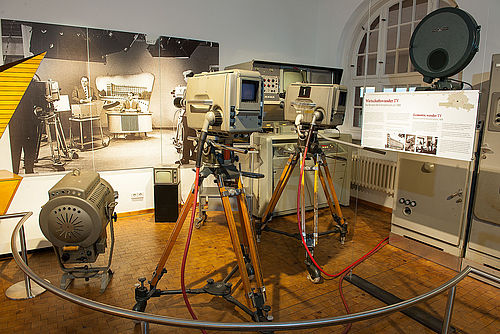
SDTB / C. Kirchner
Interactive media stations and original equipment from the Sender Freies Berlin television studio from 1958 invite visitors to explore the audio and visual material at the heart of the exhibition for themselves. Seeing, hearing, and experiencing the exhibits provides a keen sense of the close relationship between technical innovation and how the world around us changes. Today as in the past, telecommunications technology makes life in the electropolis of Berlin more enjoyable and exciting.
The first telephones were made of wood. The word “telephone” literally means “distant voice.”
SDTB / C. Kirchner
Audio recording equipment was still very complicated in 1927.
© SDTB, Historisches Archiv / Foto: Telefunken-Archiv
A detailed model showing the design and workings of a 1930s television studio.
SDTB / C. Kirchner, Modellbau: Christian Wegner, 1993, Modell: 1:25
Highlights

“Komet” television console
The “Komet” television console was produced by Kuba-Imperial, a company in Wolfenbüttel. People who wanted to display their television sets this prominently needed a lot of space. But this piece of designer furniture also gave them a radio, a turntable, seven or more speakers, and an optional tape recorder. In the 1950s, television and radio consoles became status symbols, like cars. On average they cost upwards of six monthly paychecks.
Kuba-Imperial Rundfunk und Fernsehwerk GmbH, ca. 1961

Bell box telephone
Alexander Graham Bell used such a box telephone to provide demonstrations during his lecture tours of Europe and the United States. He was so successful that he was soon considered one of the great inventors of the age, alongside Werner Siemens and Thomas Edison. Thanks to a large horseshoe magnet, the device could make calls over a distance of up to 70 kilometers.
1877

Bing Pigmyphone (child’s phonograph)
First crank, then listen – these words applied not only to standard phonographs but also to this simple but robust pigmyphone from the 1920s, which Bing Brothers produced in Nuremberg for children. The case and the horn were both made of tin. A device of this kind cost a good two marks at the time.
Nürnberger Metall- und Lackierwarenfabrik Gebr. Bing AG, ca. 1924

100 kW medium wave transmitter, operated by RIAS
In 1946, Radio in the American Sector (RIAS) started broadcasting two radio programs. This 100 kilowatt transmitter, operated by RIAS in Britz (Berlin) from 1948 to the mid-1980s, shows visitors how broadcasting worked.
Telefunken - Gesellschaft für Drahtlose Telegraphie mbH, 1948


